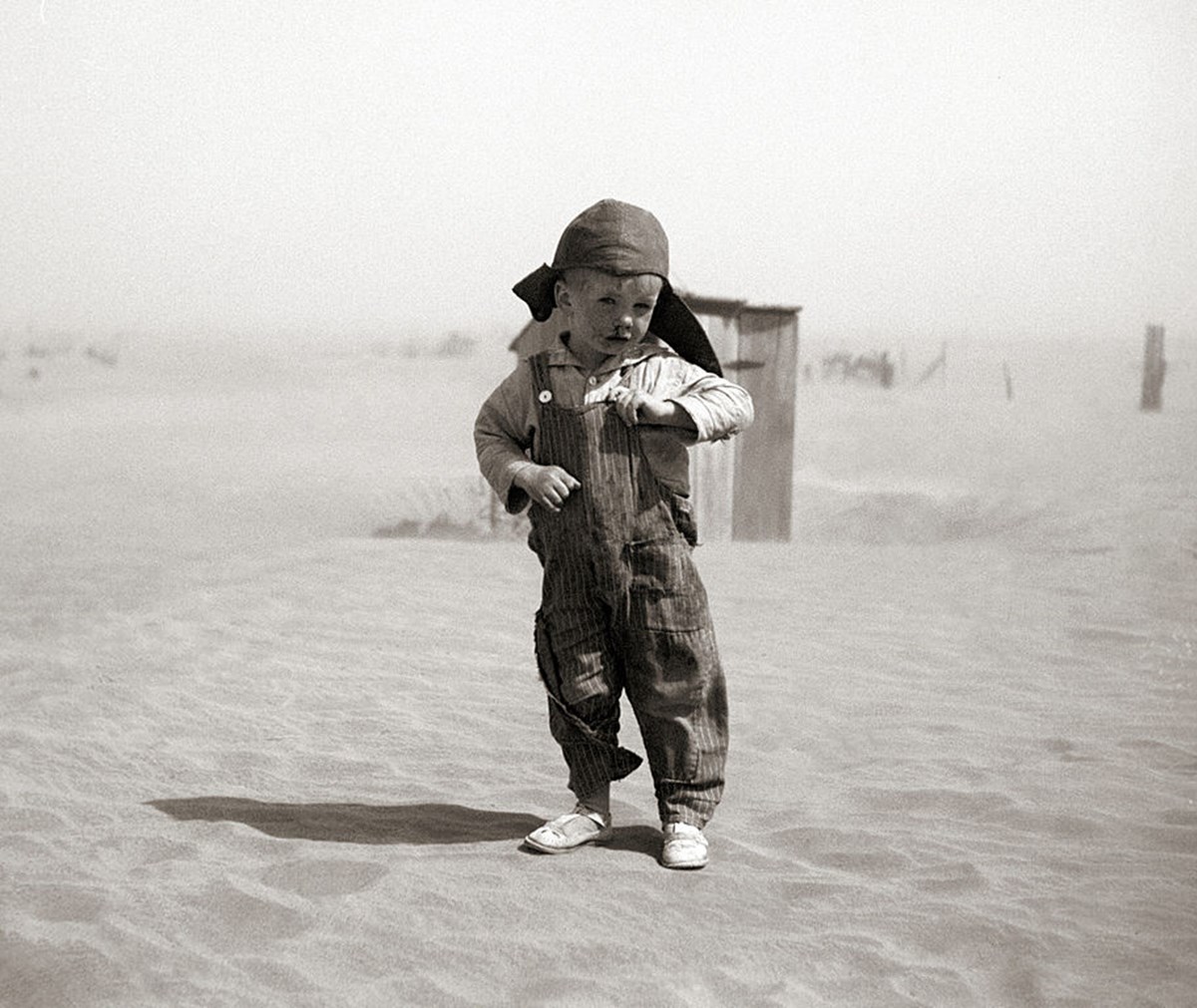In the 1930s, in addition to dealing with the Great Depression that had much of the industrialized world in its grip, Americans, particularly in the Plains States, were also coping with the Great Dust Bowl, considered the greatest single human-caused environmental catastrophe in the country’s history. Though the Depression still looms larger in the American mind, the Dust Bowl was no less traumatic or devastating for those who lived through it, and, like the economic crisis, it transformed American society as thousands of people lost their farms, their way of life, and, in some cases, even their lives.
Because the Dust Bowl is, for most people, a distant event, it might be helpful to get a sense of its massive scale through some facts and figures:
- On a single day, April 14, 1935, known to history as Black Sunday, more dirt was displaced in the air (around 300 million tons) during a massive dust storm than was moved to build the Panama Canal.
- Dirt from as far away as Illinois and Kansas was blown to points east, including New York City and states on the East Coast.
- By 1934, it was estimated that 100 million acres of farmland had lost all or most of its topsoil to the winds.
- During the same April as Black Sunday, 1935, one of FDR's advisors, Hugh Hammond Bennett, was in Washington, DC, on his way to testify before Congress about the need for soil conservation legislation. A dust storm arrived in Washington all the way from the Great Plains. As a dusty gloom spread over the nation's capital and blotted out the sun, Bennett explained, "This, gentlemen, is what I have been talking about." Congress passed the Soil Conservation Act that same year.
In addition to the damage to the land through the erosion of topsoil, the Dust Bowl prompted thousands of farmers to leave their farms and move to the cities or to leave the area entirely and head out West, around ten thousand a month at its peak. So many of those who headed West came from Oklahoma that they became known as Okies. They were immortalized by John Steinbeck in Grapes of Wrath.
In 1936, President Franklin D. Roosevelt, wishing to ensure that nothing like the Dust Bowl could ever happen again, put together the Great Plains Drought Area Committee. He charged the committee with determining the exact causes of the Dust Bowl. The first, preliminary report of the committee was filed on August 27, 1936, with an extended memo being released by the end of the year.
In The Worst Hard Time: The Untold Story of Those Who Survived the Great American Dust Bowl, Timothy Egan quotes from the first report: “Mistaken public policies have been largely responsible for the situation, [specifically] a mistaken homesteading policy, the stimulation of wartime demands which led to over cropping and overgrazing, and encouragement of a system of agriculture which could not be both permanent and prosperous.” In short, according to Roosevelt’s committee, three government policies were responsible for the Dust Bowl: The Homestead Act of 1862, which provided settlers with 160 acres of public land, followed by the Kinkaid Act of 1904 and the Enlarged Homestead Act of 1909. These acts led to a massive influx of new and inexperienced farmers across the Great Plains, many of whom believed in the myth that “the rain follows the plow.”
Though Roosevelt, who believed that government policies could be a force for good in improving the human lot, didn’t like the findings of his committee, he accepted them. Of course, policymakers did not set out to create the Dust Bowl, but they aren’t entirely off the hook. As Egan points out, three groups of people testified before Congress on the potentially disastrous consequences of policies that would encourage plowing the land in the Plains States: ecologists, American Indians, and farmers. Despite their testimony, legislators went ahead with their policies. These three groups became the Cassandras of the aforementioned policies: like Cassandra in the Greek myth, they told the truth, but no one would listen.
Whether or not legislators have learned them, several lessons emerge from the experience of the Dust Bowl. First, the full consequences of a given policy can take many years, even decades, to play out. This makes it very difficult to pinpoint the ultimate cause of a particular event. Second, multiple policies can combine to create a situation that no single policy would have brought about by itself.
In this case, the Homestead Act of 1862 brought people to the Great Plains, but it wasn’t enough to get people to plow the land. The other acts, which followed the Homestead Act by over forty years, encouraged people to act in a way that disrupted the delicate ecological balance that had been established over the course of millennia. Finally, when policymakers are committed to a certain course of action, they will often proceed regardless of input received from experts.

